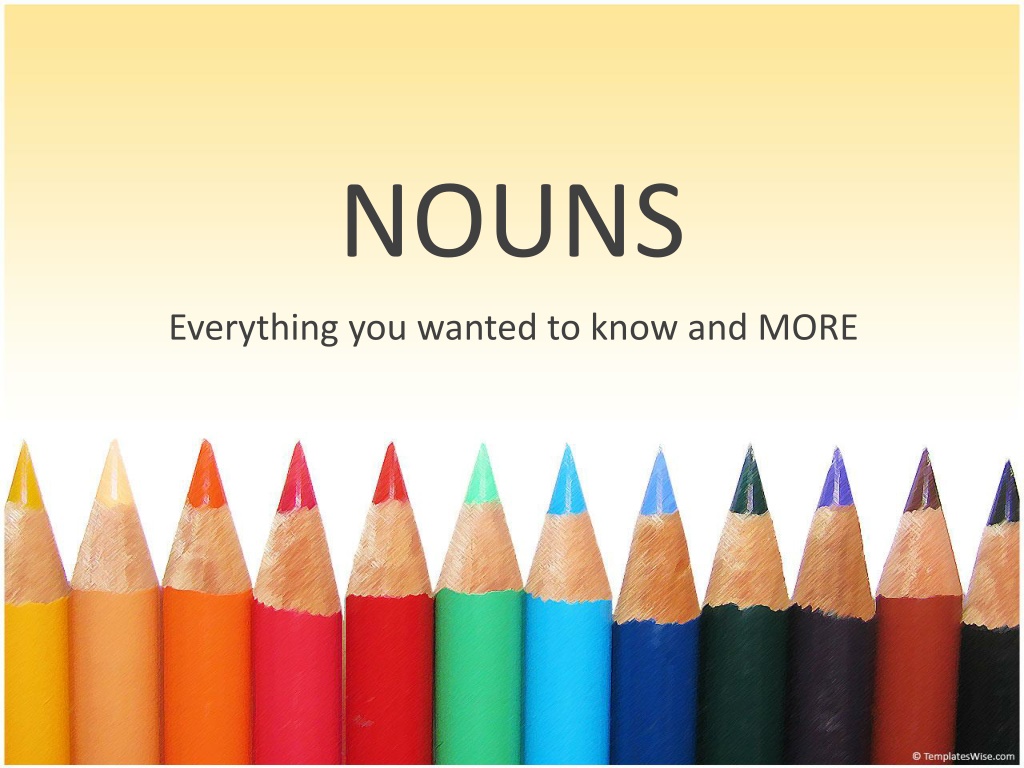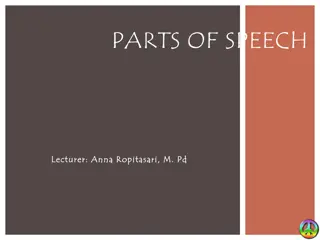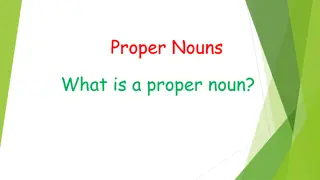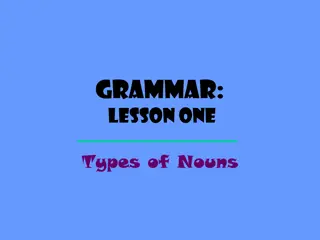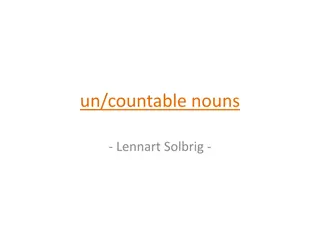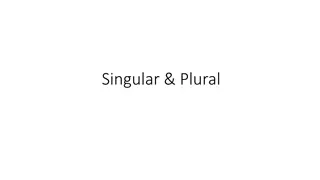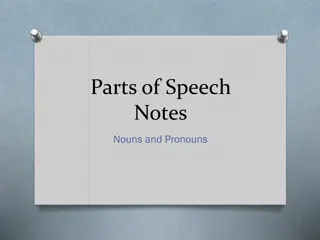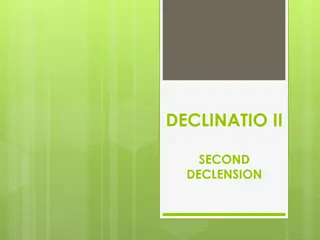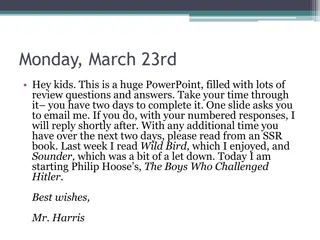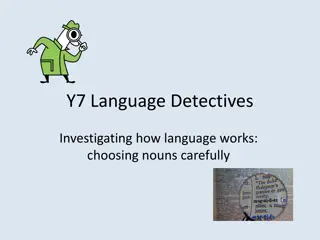All About Nouns: Types, Rules, and Examples
Explore the world of nouns - words that name people, places, things, or ideas. Learn about singular/plural, common/proper, concrete/abstract nouns, possessive/collective nouns, and rules for making singular nouns plural with helpful examples.
Download Presentation

Please find below an Image/Link to download the presentation.
The content on the website is provided AS IS for your information and personal use only. It may not be sold, licensed, or shared on other websites without obtaining consent from the author.If you encounter any issues during the download, it is possible that the publisher has removed the file from their server.
You are allowed to download the files provided on this website for personal or commercial use, subject to the condition that they are used lawfully. All files are the property of their respective owners.
The content on the website is provided AS IS for your information and personal use only. It may not be sold, licensed, or shared on other websites without obtaining consent from the author.
E N D
Presentation Transcript
NOUNS Everything you wanted to know and MORE
What are Nouns? A noun is a word that names a person , a place, a thing or an idea Examples: Person: uncle, nurse, baby, Luisa Place: kitchen, mountain, website, Raleigh Thing: apple, tulip, seagull, desk Idea: knowledge, love, respect, appreciation
ALL Nouns Can be identified by all of the following charactertistics: Singular or Plural Common or Proper Concrete or Abstract
Some Nouns Can be identified as : Possessive and/or Collective
Singular or Plural? Nouns are either singular or plural, depending on whether they name one person, place, thing or idea (singular) or more than one (plural) Examples: Singular: girl, student, teacher Plural: girls, students, teachers
How to make a singular noun plural General Rule: Simply add s Example: Singular: girl, street, door Plural: girls, streets, doors
How to make a singular noun plural Nouns that end in s, -ch, -sh, -x, -z Add es to form the plural Examples: Singular: dress, watch, ash, box Plural: dresses, watches, ashes, boxes
How to make a singular noun plural Nouns ending in y preceded by a consonant Change the y to i AND Add es to form the plural Examples: Singular: jury, secretary, melody Plural: juries, secretaries, melodies
How to make a singular noun plural Nouns ending in y NOT preceded by a consonant Add s to form the plural Examples: Singular: bay, boy, key Plural: bays, boys, keys
How to make a singular noun plural Nouns ending in -f or fe Change the f to v Add s or es Examples: Singular: knife, life Plural: knives, lives
How to make a singular noun plural Some nouns have irregular plurals: Examples: man/men; child/children Some nouns do not change form from singular to plural: Examples: fish/fish; sheep/sheep
Common and Proper Nouns A common noun is the general not the particular name of a person, place, thing or idea Common noun is not capitalized unless it is the first word of a sentence. Examples: Person: artist, uncle, poet Place: country, lake, park Thing: school, vehicle, play Idea: era, religion, movement
Common and Proper Nouns A proper noun is the name of a particular person, place, thing or idea Proper nouns are always capitalized Examples: Person: Michelangelo, Uncle Lew, Maya Angelou Place: United States, Lake Superior, Yellowstone National Park Thing: Durant Road Middle School, Jeep, Romeo and Juliet Idea: Industrial Age, Judaism, Romanticism
Concrete and Abstract Nouns A concrete noun names an object that occupies space or can be recognized by one of the five senses Examples: melody, stone, aroma, heat, desk, chair An abstract noun names an idea, quality or characteristic Examples: attitude, dignity, sadness, loyalty
Possessive Nouns Shows ownership between two nouns Add an apostrophe and s to form the possessive of a singular noun, even one that ends with s Example: the dress s collar Use an apostrophe alone to form the possessive of a plural noun that ends in s Example: the watches batteries
Possessive Nouns Use an apostrophe and s to form the possessive of a plural noun that does not end in s Example: the oxen s stalls, the children s books, the women s trophies
Possessive Nouns When two nouns share ownership, only the second noun is punctuated to show ownership Example: Sally and John are the older siblings of two brothers. This would be written as: Sally and John s brothers The younger brothers belong to both Sally and John, but only the noun (John) closest to the noun brothers shows the possession
Possessive Nouns When two nouns do not share ownership, both possessive nouns are punctuated Example: Sally and John are friends and each has a younger brother. This would be written as: Sally s and John s brothers This example shows that Sally has a brother or brothers and John has a brother or brothers
Collective Nouns Singular in form but names a group Examples: Family, Audience, Committee, Band, Team, Flock, Troop, Herd
Collective Nouns Can be singular or plural If you refer to the group as a whole acting together, the collective noun is singular Example: Our family is going to the beach for vacation. (The family is acting as one group going to the beach) Example: The committee announces its meeting schedule for the new year. (The committee meets as one group)
Collective Nouns Can be singular or plural If you refer to the individual members of the group, then the noun is considered plural. Example: The jury are comparing their interpretations of the evidence. (Each member of the jury is sharing his/her thoughts with the other members of the jury). Example: The orchestra play their instruments with warmth. (Each member of the orchestra is playing his/her individual instrument).
Now What?? You ve seen the presentation and you ve taken notes Now you are ready for practice. You will need your composition books (open to the center), a pencil Now open the Noun Practice PowerPoint and follow the directions
